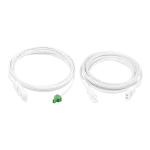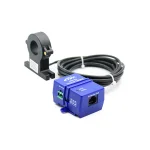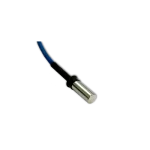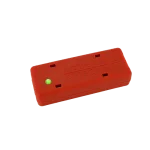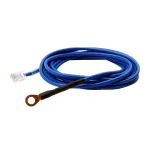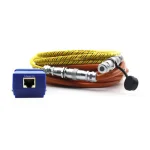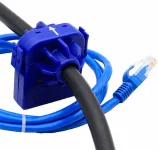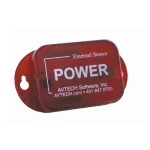AKCP Server Cabinet Thermal Map Sensors

Extra Services: Installation and Support Plans.


Lead Times & Delivery Guide – contact us for a specific day/time

Our Price Check Guarantee ensures value for money when buying this product

Pay using our secure payment gateway with a debit/credit card, your Amazon, Google or PayPal account, make a BACS payment, open a credit account or request a leasing quotation.

The ACKP Server Thermal Map Sensor can be used to monitor temperature differentials between the front and rear of a server cabinet. The sensor can monitor temperature only or in dual format, temperature and humidity and helps to monitor and identify server cabinet hotspots.
Cabinet Temperature Map Options
| SKU | Temperature Sensors | Humidity Sensors | Installation Notes |
|---|---|---|---|
| CTMS | 6 (3+3) | 0 | 2x strings, 1x for the front and 1x for the back of the cabinet |
| CTHMS | 6 (3+3) | 2 (1+1) | 2x strings, 1x for the front and 1x for the back of the cabinet |
Supplied with a Sensor Splitter Adapter Box to connect the strings.
Server Cabinet Hotspots
Data centre environmental monitoring with thermal map sensors can help identify and eliminate hotspots in server cabinets by identifying areas where the temperature differential between front and rear are too high.
Thermal maps consist of a string of six temperature sensors and optionally two humidity sensors. The sensors are pre-wired for easy installation into a server cabinet and are placed at the top, middle and bottom, front and rear of the cabinet. This configuration monitors the air intake and exhaust temperatures of the server cabinet, as well as the temperature differential from the front to the rear.
Thermal Map Sensors are easy to install and mount with magnetic, cable ties or can be fixed in place using ultra-high bond adhesive tape. The sensors are mounted onto the front and rear doors of a perforated server cabinet so they are exposed directly to the airflow in and out of the rack. On sealed cabinets, they can still be mounted on the inside to give the same monitoring of temperature differentials between front and rear, and ensure that airflow is distributed across the cabinet.
Thermal Map Sensors connect to AKCP sensorProbe+ base units and can be extended up to a maximum of 15m cable length. A single IP address can be used to monitor multiple cabinets and up to 16 thermal maps can be connected to a single sensorProbe+ monitoring base unit.
Using Thermal Map Sensors
AKCP Thermal Map Sensors can help to identify obstructions within server cabinets. Cabling and other obstructions can impede the flow of cool and hot exhaust air leading to high-temperature differentials between the inlet and outlet temperatures.
As fans age, they can fail and the airflow over the IT equipment will reduce leading to higher temperature differentials between front and rear of a server cabinet. AKCP Thermal Map Sensors can provide early indication of fan failure and problems with fan-related air flow.
When there is an insufficient pressure differential between the front and rear of the cabinet, airflow speed reduces. The less cold air flowing through the cabinet, the higher the temperature differential front to rear will become. AKCP Thermal Map Sensors can help to identify areas for investigation and provide alerts when temperatures fall outside an acceptable range.
Thermal Map Sensors can also be used to provide the data required when adjustments are need to data centre cooling systems to improve Power Usage Effectiveness (PUE).



































